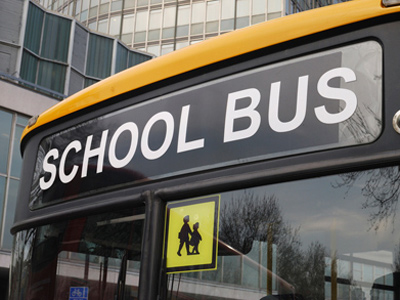How can I Help my Child Settle in to their New School?
The vast majority of children change schools at some stage, when they move up from primary to secondary school or if the family moves house. You can support them by helping them get organised and boosting their confidence
 Every child encounters a change of schools, typically as they transition from primary to secondary school at the end of Year 6. This shift, driven by relocation or other factors, prompts a mix of excitement and anxiety. This comprehensive guide is designed to assist you in facilitating a smooth settling-in process for your child in their new school.
Every child encounters a change of schools, typically as they transition from primary to secondary school at the end of Year 6. This shift, driven by relocation or other factors, prompts a mix of excitement and anxiety. This comprehensive guide is designed to assist you in facilitating a smooth settling-in process for your child in their new school.
Transitioning schools is a pivotal and sometimes challenging moment for both children and parents. It involves adapting to new environments, meeting unfamiliar faces, and navigating different academic structures. The adjustment period may vary, but proactive steps can ease the journey.
LEARN ABOUT THE BENEFITS OF LEARNING THROUGH QUIZZES
Collaborative Efforts of Secondary Schools for New Students
Recognizing the challenges, secondary schools often collaborate with primary schools to smoothen the transition. Some effective strategies include:
- Secondary teachers making visits to primary schools, introducing themselves or even conducting sample classes
- Organizing open evenings and events where prospective students and parents can explore the school premises and engage in fun activities like science experiments or basketball
- Facilitating visits by entire primary classes, accompanied by their primary teachers, to the secondary school. These visits could include guided tours, sample lessons, and sometimes a more extended stay in the summer term, allowing students to familiarize themselves before the official start in September
- Hosting Summer Schools, providing a week of enjoyable activities for students to make new friends and become acquainted with teachers and school facilities
Guiding Your Child through the Start of Secondary School
The commencement of secondary school often triggers concerns and uncertainties in children. Encourage open communication, actively listen to their worries, and share personal stories of successful transitions. Attend open days together, help them navigate the school layout, and emphasize the new beginning as an exciting opportunity for growth.
For additional insights and tips, explore our comprehensive The National Curriculum At Secondary School article.
Fostering Confidence for the New School Journey
Even children known for their outgoing nature may feel a level of apprehension about the unknowns of a new school. Boost their confidence with these strategies:
- Express pride in who they are, emphasizing personal qualities beyond academic achievements
- Compliment their appearance in the new school uniform, highlighting their readiness for this new chapter
- Offer praise for their effort, underscoring the importance of resilience and perseverance
- Discuss and model confident body language, illustrating its impact on how others perceive and interact with them
Preparing for the School Commute
The change in commuting, from walking with friends to potentially taking a bus to a new school, requires thoughtful preparation:
- Identify if any friends will be taking the same route
- Coordinate with other parents to organize a 'test run' for the children to travel together before the official term begins, whether by walking, carpooling, or using public transport
FIND OUT WHY KIDS LOVE OUR WEBSITE
Promoting Organizational Skills in Your Child
Beyond reassurance, aiding your child in becoming more organized is crucial for a smooth transition:
- Encourage them to take responsibility for their appearance and ensure their school uniform and PE kit are prepared in advance
- Establish the habit of packing their school bag the night before to avoid morning rushes and minimize the risk of forgetting essential items
- Ensure they have their necessary items, such as dinner money, meal card, or a packed lunch, before leaving the house
Facilitating Friendships at the New School
Even if your child is moving to the new school with friends, encourage an openness to making new connections. Consider these ideas:
- Encourage treating others with kindness and respect, fostering positive interactions
- Suggest approaching and initiating conversations with other children
- Teach them empathy and the ability to see situations from others' perspectives
- Getting involved in after-school clubs and activities can provide opportunities to build friendships beyond the classroom
Navigating the Increase in Homework
Transitioning from primary to secondary school often comes with a significant uptick in homework. Ensure your child has a designated quiet space for work, access to necessary tools, and help them develop organizational skills. Most secondary schools provide diaries or planners; encourage them to record tasks and due dates, fostering a habit of effective time management.
Addressing Bullying Concerns

Bullying stands as a significant concern for children entering a new school. A survey by Bullying UK revealed that 55% of children have experienced bullying at some point, with 42% expressing concerns about internet bullying. Assure your child that bullying is not tolerated by the school, and provide resources such as the CBBC website. Reinforce that they can confide in you or a trusted staff member if they encounter any issues.
To aid your child's smooth integration into the new school, offer continuous support, provide clarity on their daily experiences, and instil confidence in their abilities. This partnership of guidance and personal effort lays a solid foundation for independence. Explore our Knowledge Bank for more educational insights and parenting advice, covering topics such as friendships, Asperger’s Syndrome, autism, and beyond.



